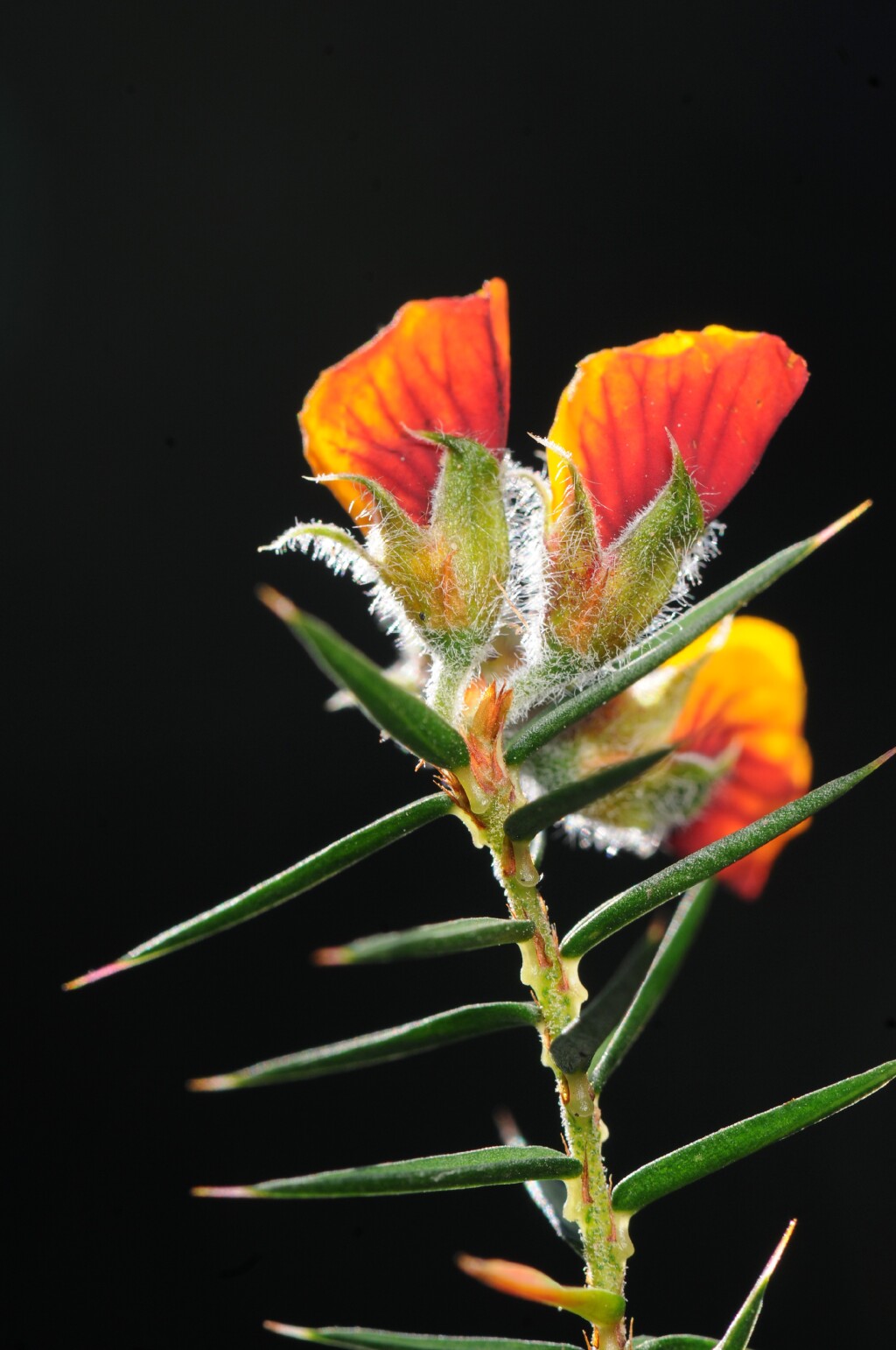Pultenaea juniperina
Labill. Prickly Bush-peaShrub to 1.2 m high; stems terete with short, curled hairs when young. Leaves alternate, lanceolate, 5–10 mm long; base often cordate; apex tapered to a slender, pungent point; concolorous or lower surface slightly darker than upper; margin incurved; stipules lanceolate, 2–3 mm long, appressed to stem. Flowers axillary, clustered at tips of short lateral branches; bracts absent; calyx 5–6 mm long, usually hirsute; bracteoles attached at base of calyx tube, lanceolate, 2–3 mm long, hairy, particularly along the prominent midrib; standard (7–)9–11 mm wide; ovary and lower half of style hairy. Pod turgid, hairy, lower half enclosed by calyx. Flowers Oct.–Nov.
VVP, GipP, OtP, WaP, Gold, CVU, GGr, DunT, NIS, EGL, EGU, WPro, HSF, HNF, OtR, Strz, MonT, HFE, VAlp. Also NSW, ACT, Tas. Confined to heathland or heathy understorey in moist forest in the Grampians, with a disjunct occurrence near Tonimbuk.
Plants from the Tonimbuk area differ in having smaller flowers and a glabrous calyx, but this form falls well within the range of variation seen in Tasmanian populations where the species is widespread and very variable.
Pultenaea juniperina is treated here as a distinct species from the Grampians and Tonimbuk area. All other mapped records are attributable to P. forsythiana, see note under P. forsythiana.
Corrick, M.G. (1996). Pultenaea. In: Walsh, N.G.; Entwisle, T.J., Flora of Victoria Vol. 3, Dicotyledons Winteraceae to Myrtaceae, pp. 765–793. Inkata Press, Melbourne.
 Spinning
Spinning
